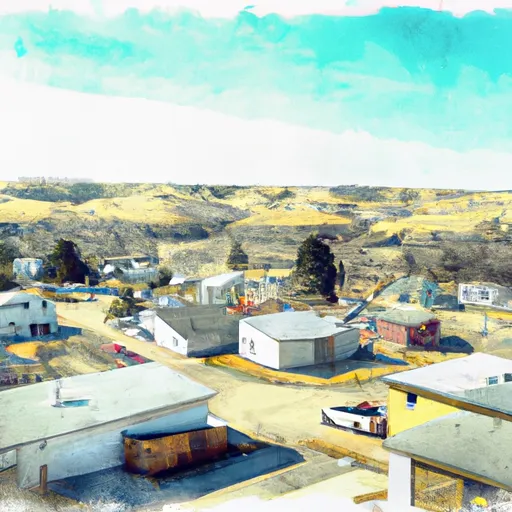-
 Snoflo Premium
Snoflo Premium
Get unlimited access to all our content
With no Ad interruptions! - Start Your Free Trial Login with existing account
Rozet
Eden Index
Climate
7.5
•
Recreation
2.2
•
Community
•
Safeguard
3.8/10

Rozet, Wyoming is a small unincorporated community located in Campbell County. Situated in the northeastern part of the state, Rozet experiences a semi-arid climate with cold winters and warm summers. The area receives an average annual precipitation of around 12 inches, which mainly occurs as snow in the winter months.
Hydrologically, the region surrounding Rozet is known for its abundant water sources. The nearby Powder River is a significant waterway that flows through the area, providing opportunities for fishing, boating, and other water-based activities. The river supports various fish species, including trout, catfish, and walleye, attracting anglers from near and far.
Outdoor recreation enthusiasts in Rozet can also explore the vast landscapes that surround the community. These include the nearby Thunder Basin National Grassland, which offers opportunities for hiking, camping, and wildlife viewing. The area is home to diverse wildlife, including deer, elk, coyotes, and various bird species. Additionally, the grassland provides a scenic backdrop for activities like photography and nature exploration.
In summary, Rozet, Wyoming experiences a semi-arid climate with cold winters, warm summers, and a moderate amount of annual precipitation. The community benefits from the nearby Powder River, offering recreational activities such as fishing and boating. Outdoor enthusiasts can also explore the picturesque Thunder Basin National Grassland, which provides various opportunities for hiking, camping, and wildlife viewing.
What is the Eden Index?
The Snoflo Eden Index serves as a comprehensive rating system for regions, evaluating their desirability through a holistic assessment of climate health, outdoor recreation opportunities, and natural disaster risk, acknowledging the profound impact of these factors on livability and well-being.
Climate Health Indicator (CHI): 7.5
Rozet receives approximately
391mm of rain per year,
with humidity levels near 63%
and air temperatures averaging around
8°C.
Rozet has a plant hardyness factor of
4, meaning
plants and agriculture in this region thrive during a short period during spring and early summer. Most
plants will die off during the colder winter months.
By considering the ideal temperature range, reliable water supplies, clean air, and stable seasonal rain or snowpacks, the Climate Health Indicator (CHI) underscores the significance of a healthy climate as the foundation for quality living.
A healthy climate is paramount for ensuring a high quality of life and livability in a region, fostering both physical well-being and environmental harmony. This can be characterized by ideal temperatures, reliable access to water supplies, clean air, and consistent seasonal rain or snowpacks.
Weather Forecast
Streamflow Conditions
Belle Fourche
Area Rivers
Belle Fourche
Snowpack Depths
Belle Fourche
Reservoir Storage Capacity
Belle Fourche
Groundwater Levels
Recreational Opportunity Index (ROI): 2.2
The Recreational Opportunity Index (ROI) recognizes the value of outdoor recreational options, such as parks, hiking trails, camping sites, and fishing spots, while acknowledging that climate plays a pivotal role in ensuring the comfort and consistency of these experiences.
Access to outdoor recreational opportunities, encompassing activities such as parks, hiking, camping, and fishing, is crucial for overall well-being, and the climate plays a pivotal role in enabling and enhancing these experiences, ensuring that individuals can engage in nature-based activities comfortably and consistently.
Nearby Ski Areas
Catastrophe Safeguard Index (CSI):
The Catastrophe Safeguard Index (CSI) recognizes that natural disaster risk, encompassing floods, fires, hurricanes, and tornadoes, can drastically affect safety and the overall appeal of an area.
The level of natural disaster risk in a region significantly affects safety and the overall livability, with climate change amplifying these risks by potentially increasing the frequency and intensity of events like floods, fires, hurricanes, and tornadoes, thereby posing substantial challenges to community resilience and well-being.
Community Resilience Indicator (CRI):
The Community Resilience Indicator (CRI) recognizes that education, healthcare, and socioeconomics are crucial to the well-being of a region. The CRI acknowledges the profound impact of these elements on residents' overall quality of life. By evaluating educational resources, healthcare accessibility, and economic inclusivity, the index captures the essential aspects that contribute to a thriving community, fostering resident satisfaction, equity, and social cohesion.

